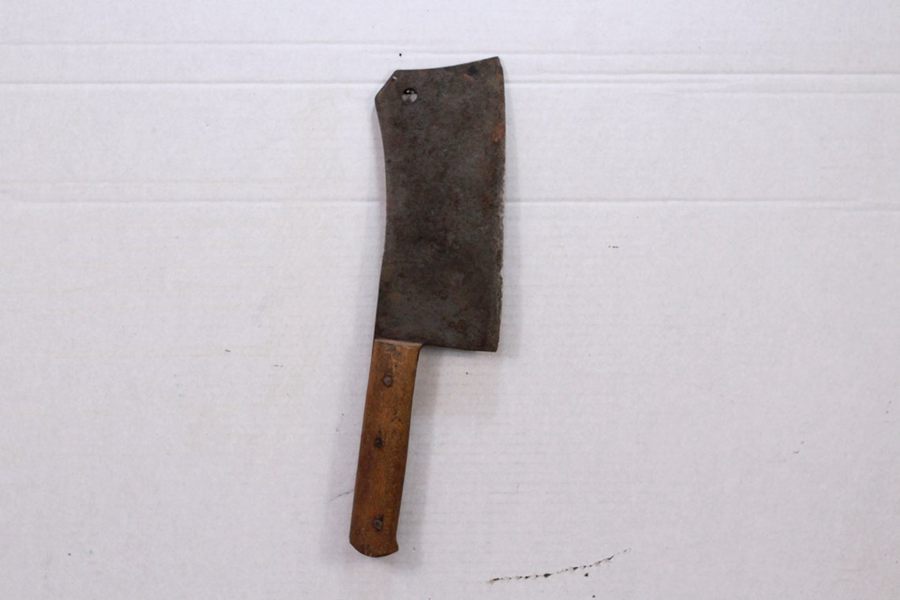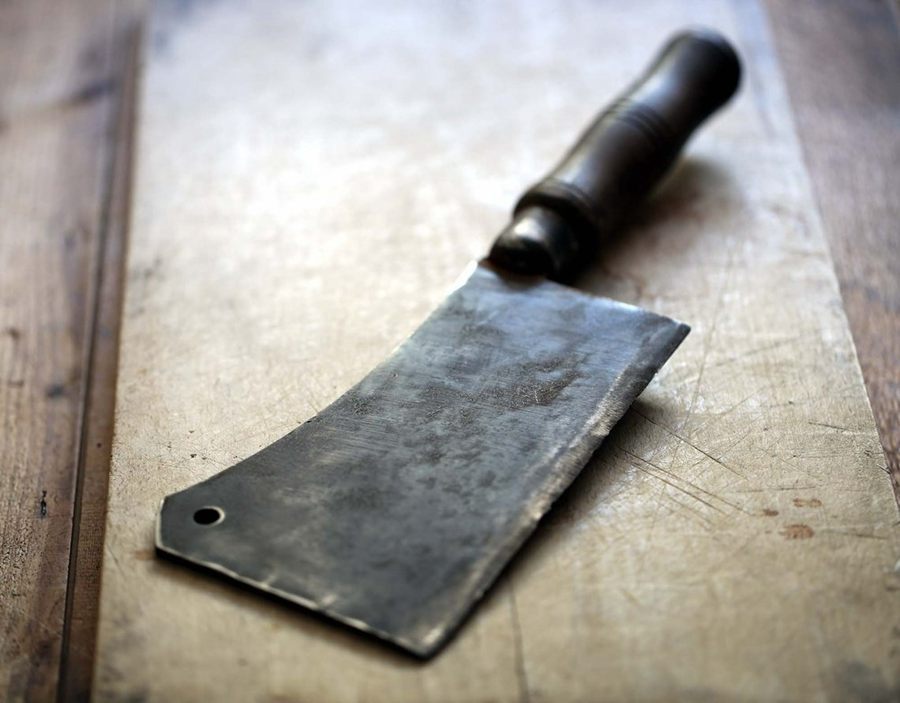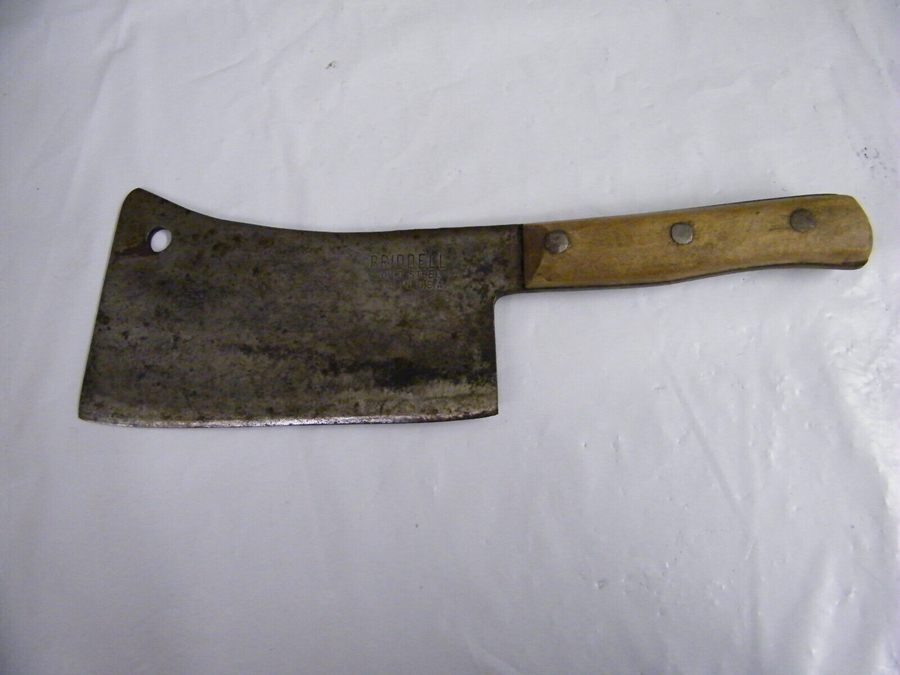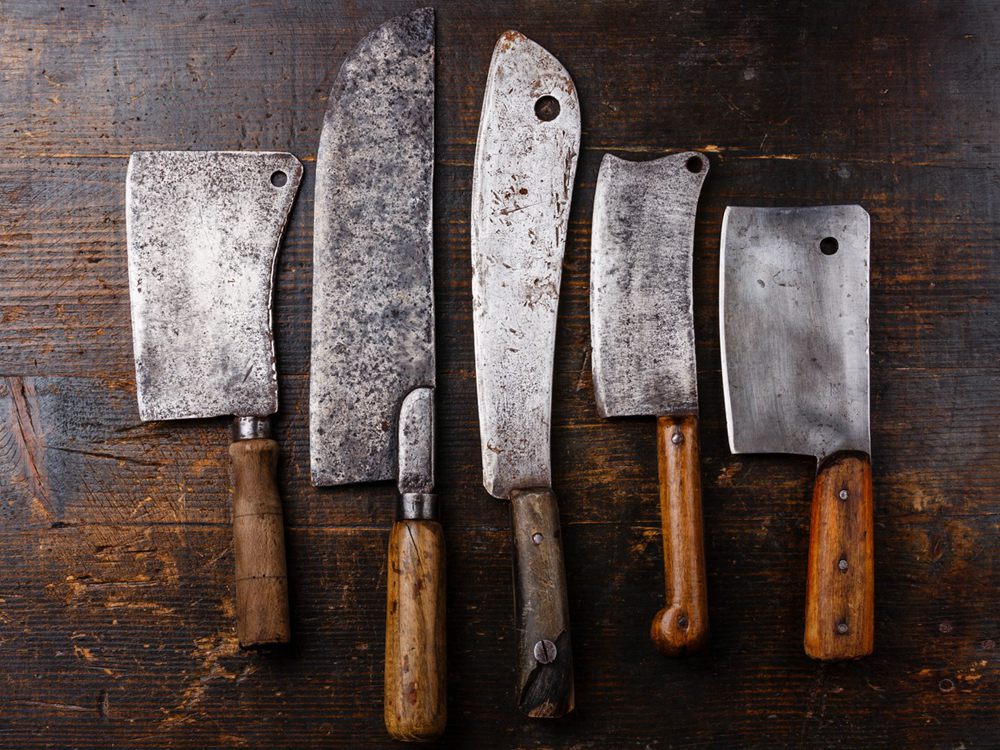Antique meat cleavers are a fascinating area of interest, with a rich history that often goes overlooked. These powerful kitchen tools not only hold a functional place in the culinary world but also carry an artistic and collectible charm. In this guide, we will explore the nuances of identifying and valuing these antique treasures, helping you tap into a deeper appreciation for their beauty and significance.
As you delve into the world of antique meat cleavers, it’s important to recognize the subtle differences between them and their vegetable cleaver counterparts. While both types serve as cutting instruments, the meat cleaver is specifically designed to handle tough meats, featuring a heavy, sharp blade, and robust spine. Identifying an authentic antique meat cleaver involves observing these characteristics while also noting any markings or unique features, which may lead to clues on the cleaver’s origin and value.
Understanding the factors that influence the value of an antique meat cleaver, such as age, condition, manufacturer, and rarity, is key to properly gauging its worth. As you navigate through this guide, you will gain the knowledge and confidence to identify and appraise the antique meat cleavers in your collection or those you may come across in your search for these intriguing artifacts.
Table of Contents
The History & Evolution of Antique Meat Cleavers
In the early days of meat processing, you might have used a basic knife or axe to separate meat and bones. However, as butchery evolved, specialized tools like meat cleavers were developed to make the job more efficient and precise.
During the Middle Ages, blacksmiths began crafting the first meat cleavers. Made from iron, these early examples were often quite heavy and featured a long, wide blade with a sharp edge for slicing through thick joints and bones. The blades often had a blunt tip, which made it easy to use the cleaver as a chopping tool. As with many early tools, craftsmen personalized cleavers with their own designs and engravings, making them a sought-after collectible today.
Over time, the design of meat cleavers shifted to accommodate better methods and materials. For instance, in the 18th and 19th centuries, the introduction of high-carbon steel allowed for stronger, sharper blades that could endure rigorous use in increasingly busy butcher shops. Handle materials also improved, with materials like wood or bone giving way to more durable options like brass and steel.
During the Industrial Revolution, meat cleavers began to be mass-produced in factories, leading to more standardized designs and sizes. Although this made cleavers more affordable and accessible, it also somewhat diminished their individuality and craftsmanship. Some examples of antique cleavers from this era display a balance of form and function, incorporating elaborately engraved and branded blades with practical features like hanging holes and sturdy handles.
When assessing the value of an antique meat cleaver, consider these factors:
- Materials used: Cleavers made from high-carbon steel or featuring ornate handle materials like brass may be more valuable.
- Age: The age of the cleaver can indicate rarity and quality, with older examples typically garnering more interest from collectors.
- Craftsmanship: Unique engraving, maker’s marks, or distinguishing design elements can enhance a cleaver’s appeal and value.
- Condition: As with most antiques, the condition of the meat cleaver plays a significant role in determining its value. A well-maintained example with minimal damage or wear is generally more desirable.
Understanding the history and evolution of antique meat cleavers can help you better appreciate their functional and decorative qualities and guide you in identifying and valuing your own collection.
How to Tell if Meat Cleavers are Antique or Old
To determine if a meat cleaver is antique or old, you should first inspect the material and construction. Antique meat cleavers typically have a heavy and sharp blade attached to a firm spine, designed for cutting through tough meat. Pay close attention to the blade’s thickness and overall shape. An antique meat cleaver would have a more robust and broader blade.
Check the handle of the cleaver. Most antique meat cleavers will have hardwood handles and brass fittings. If the handle appears worn out or has a patina, it might indicate the cleaver’s age. Additionally, the handle’s shape and size can give you some clues. Antique cleavers often feature a more ergonomic handle design that fits comfortably in your hand.
Look for any maker’s marks or stamps on the cleaver. If the meat cleaver has a brand or maker’s name stamped on it, you can research the company or individual responsible for its production. Knowing the manufacturer’s history might help you determine the approximate age of the cleaver.
Examine the overall condition of the cleaver. Wear and tear, such as scratches, nicks, and discoloration, can indicate the age of the item, but be cautious as these signs can also be a result of excessive use or poor maintenance. However, if the cleaver shows signs of being handmade, such as uneven edges or hammer marks, it’s more likely to be antique or old.
Lastly, consult an expert if you are unsure of your meat cleaver’s age. While online research might help you get a basic understanding, a professional appraiser or knowledgeable collector could provide a more accurate assessment of the cleaver’s age and value. Remember to keep these tips in mind when analyzing your meat cleaver, and you’ll have a better chance of identifying its true age and value.
Types of Antique Meat Cleavers and Their Values
When identifying antique meat cleavers, you’ll notice that they closely resemble vegetable cleavers. However, upon closer inspection, you can spot the differences. Antique meat cleavers are characterized by their heavy, sharp blades attached to a firm spine designed to cut through tough meat. In this section, you’ll learn about different types of antique meat cleavers and their values.
Vintage European Butcher Knife

This type of antique meat cleaver features a European design and is often used for chopping beef, pork, and lamb. It’s characterized by its vintage appearance and can be used as both a functional tool in the kitchen and an attractive hanging decor piece. The value of Vintage European Butcher Knives can range from $52.70 to $62.00, depending on factors such as condition, age, and rarity.
Large Rustic French Butcher’s Meat Axe

The Large Rustic French Butcher’s Meat Axe is a more massive antique meat cleaver often used by professional butchers. It features a primitive-looking steel blade, making it a distinctive piece in any collection. The typical value of this type of antique meat cleaver can range from $76.23 to $95.29.
Vintage USA Made Briddell Meat Cleaver

Notable for its craftsmanship, the Vintage USA Made Briddell Meat Cleaver is a heavy-duty butcher knife often used for splitting hogs. Due to their origins in the United States, they hold a unique appeal to collectors, with values around $37.99.
Keep the following factors in mind when assessing the value of an antique meat cleaver:
- Condition: Well-preserved cleavers with minimal signs of wear and rust generally have higher values.
- Rarity: Antique cleavers produced in limited quantities or by specific manufacturers can be more valuable.
- Age: Older cleavers, especially those from the 19th century or earlier, tend to have higher collectors’ values.
By understanding the types of antique meat cleavers and their respective values, you can confidently grow your collection or make informed decisions when buying or selling these unique pieces.
10 Factors to Identify & Value Antique Meat Cleavers
1. Antique Meat Cleaver’s Age
To determine an antique meat cleaver’s age, examine its overall appearance and craftsmanship. Older cleavers usually have more wear, patina, and a less refined-forging process. Keep in mind that age alone doesn’t dictate value; rarity and demand contribute significantly to an item’s worth.
| Antique Meat Cleaver’s Age | Average Valuation |
|---|---|
| Pre-1800s | $450 – $550 |
| 1800s – Early 1900s | $300 – $450 |
| Mid – Late 1900s | $200 – $350 |
| Modern Reproductions | $50 – $150 |
2. Old Meat Cleaver Blade Materials
Examine the blade materials. Vintage meat cleavers were typically made of carbon steel or iron, while modern ones are mostly made of stainless steel. Carbon steel blades usually develop a patina, indicating age and authenticity.
| Blade Material | Average Valuation |
|---|---|
| Carbon Steel | $300 – $500 |
| Iron | $200 – $400 |
| Stainless Steel (Replicas) | $50 – $150 |
3. Antique Meat Cleaver Blade’s Shape
Consider the blade’s shape. Older meat cleavers come in various shapes, including rectangular, slightly curved, or even two-bladed designs. Some may have an inscription or smith’s mark.
| Blade Shape | Average Valuation |
|---|---|
| Rectangular | $300 – $400 |
| Slightly Curved | $350 – $450 |
| Two-Bladed | $400 – $500 |
4. Vintage Meat Cleaver Brands
Brands play a significant role in the value of antique meat cleavers. Renowned forges produced high-quality products that remain sought after by collectors.
| Brand | Average Valuation |
|---|---|
| Wm. Beatty & Sons | $400 – $600 |
| J.A. Henckels | $350 – $500 |
| F. Dick | $300 – $450 |
5. Vintage Meat Cleaver’s Blade Size
Size also affects value. Larger cleavers, used for butchering larger animals, tend to be rarer and more valuable.
| Blade Size | Average Valuation |
|---|---|
| Small (6-8 inches) | $200 – $300 |
| Medium (9-11 inches) | $300 – $400 |
| Large (12-14 inches) | $400 – $500 |
6. Old Cleaver Tang Shape
The tang of a meat cleaver – the part that extends into the handle – can also offer clues about its age and origin. Rat-tail tangs, with a narrow extension, are usually found in older cleavers. Full tangs, found in modern cleavers, extend the full width of the handle.
| Tang Shape | Average Valuation |
|---|---|
| Rat-Tail Tang | $300 – $500 |
| Full Tang | $150 – $300 |
7. Antique Meat Cleaver Styles
Different styles of antique meat cleavers can also influence their value. Styles may vary depending on the country of origin or the purpose of the cleaver.
| Cleaver Style | Average Valuation |
|---|---|
| European | $350 – $450 |
| American | $300 – $400 |
| Chinese | $250 – $350 |
8. Old Meat Cleaver Make
The make of a meat cleaver can affect its value. Hand-forged cleavers are usually more valuable than those made by machines.
| Cleaver Make | Average Valuation |
|---|---|
| Hand-Forged | $350 – $550 |
| Machine-Made | $200 – $350 |
9. Antique Meat Cleaver Finishes
The finish on an antique meat cleaver can also play a role in its value. Certain finishes, like a mirror polish or patina, can add value to the item.
| Cleaver Finish | Average Valuation |
|---|---|
| Mirror Polish | $400 – $500 |
| Patina | $300 – $400 |
| No Finish | $200 – $300 |
10. Old Meat Cleaver Condition
Finally, the condition of the meat cleaver is crucial in determining its value. Cleavers in good condition, with minimal damage or wear, will fetch a higher price than those with cracks, chips or extensive wear.
| Cleaver Condition | Average Valuation |
|---|---|
| Excellent | $400 – $600 |
| Good | $300 – $400 |
| Poor | $100 – $200 |
Tips for Collecting and Displaying
When you begin collecting antique meat cleavers, there are several factors to consider. By focusing on proper identification, care, and presentation, your collection will be both valuable and visually appealing.
- Antique Meat Cleaver Identification: Inspect the blade’s shape, size, and markings, as these can provide important clues to the cleaver’s origin and age. For example, if the blade is 6-8 inches in length, it could be an antique model worth $300-$500. A shorter blade might be worth less. Look for manufacturer names or logos, as well as any dates or signatures that could help verify the authenticity of your find.
- Cleaning and Restoring: Handle antique meat cleavers with care, as improper cleaning can damage or decrease their value. For example, avoid using abrasive methods if a cleaver has a patina, the natural oxidation of the metal. If a cleaver requires restoration, such as replacing a damaged handle, use materials like oak or teak, which can provide both strength and an authentic appearance. Remember that alterations should be minimal, preserving the original craftsmanship as much as possible.
- Displaying Your Collection: Consider how you want to present your antique meat cleavers. Choose a location that is free from direct sunlight, excessive humidity, or high temperatures, as these environmental factors can damage your collection over time. Look for display options that allow your cleavers to be showcased safely, such as shadow boxes, shelves, or hooks. Ensure that your display is secure and can support the weight of the cleavers.
Here are some additional display ideas:
- Arrange similar cleavers together (by size, shape, or age) for a visually organized presentation.
- Create labels with the cleaver’s manufacturer, age, and history to engage visitors in your collection.
- Consider incorporating butcher tools or related items to provide context and interest.
By focusing on proper identification, care, and presentation, you can create a unique and valuable antique meat cleaver collection that showcases your expertise and passion.
Final Thoughts
In your quest to identify and determine the value of antique meat cleavers, always consider the key factors such as brand, age, and condition. Keep in mind that some well-known brands that manufactured vintage meat cleavers include Marbles, Puma, Hubertus Solingen, Case, Dexter Russell, and Boker, as mentioned in the search results.
When examining antique cleavers, pay special attention to:
- The markings and engravings on the blade: These details can offer clues about the manufacturer and the cleaver’s age.
- The handle’s construction and materials: Quality handles are usually made from sturdy materials such as wood or bone. Replacements can diminish the value of the cleaver.
- The overall state of the blade: Though some signs of wear can add character and history to the cleaver, excessive damage or rust might negatively impact the value.
Remember that proper research and understanding of the specific cleaver’s history are essential for accurate identification and valuation. Online resources, knife forums, and vintage item dealers or professionals can be useful when seeking information about your antique meat cleaver. Good luck in your exploration of these unique and interesting collectible items!
FAQ
How do I identify an antique meat cleaver?
To identify an antique meat cleaver, you should first look at its overall design and features. A cleaver will typically have a heavy and sharp blade attached to a firm spine made for cutting through tough meat. Search for any markings or logos on the cleaver, which can indicate a specific maker or date of manufacture.
What factors determine the value of an antique meat cleaver?
Here are some factors that can affect the value of an antique meat cleaver:
- Date and age: Early 1600s models tend to be more valuable due to their handmade finish and carved handles.
- Maker: Recognizable and reputable makers such as Wm. Beatty & Son or ARCO New York can increase the value of the cleaver.
- Condition: Cleavers that are in good condition, with minimal damage and wear, will be more desirable to collectors and thus more valuable.
- Rarity: Unique or rare cleaver designs can command higher prices.
How can I find out the date of manufacture for my cleaver?
Look for any markings or logos on the cleaver, which can sometimes indicate a date of manufacture. If you’re unable to find this information, you can perform an online search for the maker and model of your cleaver, which may yield more information about its production period. You can also consult with antique experts or online forums for additional information.
Where can I find examples and prices for various antique meat cleavers?
Some online platforms such as Etsy offer listings for antique meat cleavers along with their prices. Here are a few examples:
- An 1800s Cast Iron Meat Cleaver is priced at $74.99
- A Beatty 9″ Blade Meat Cleaver from the 1800s is listed for $299.00
- A Case XX USA 5035 Heavy Duty 12″ Meat Cleaver from the 1980s is available for $80.00
Please remember that these prices may vary depending on the condition, maker, and rarity of the cleaver.









